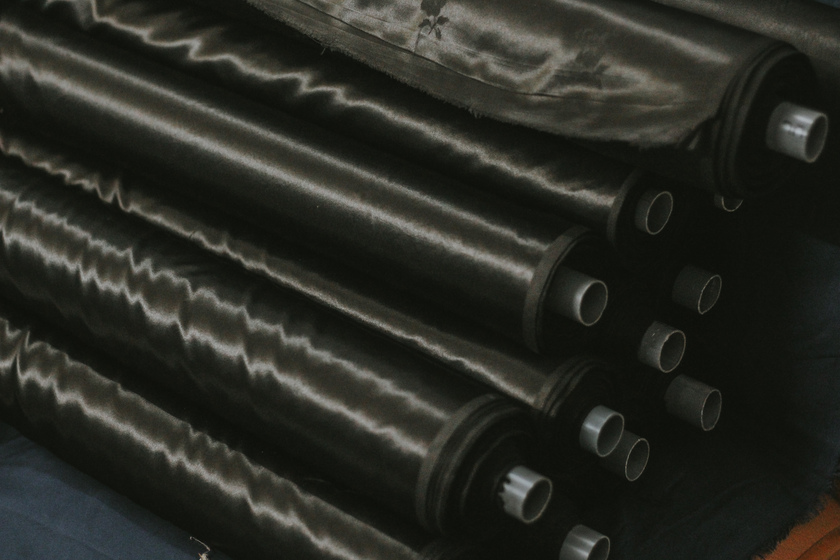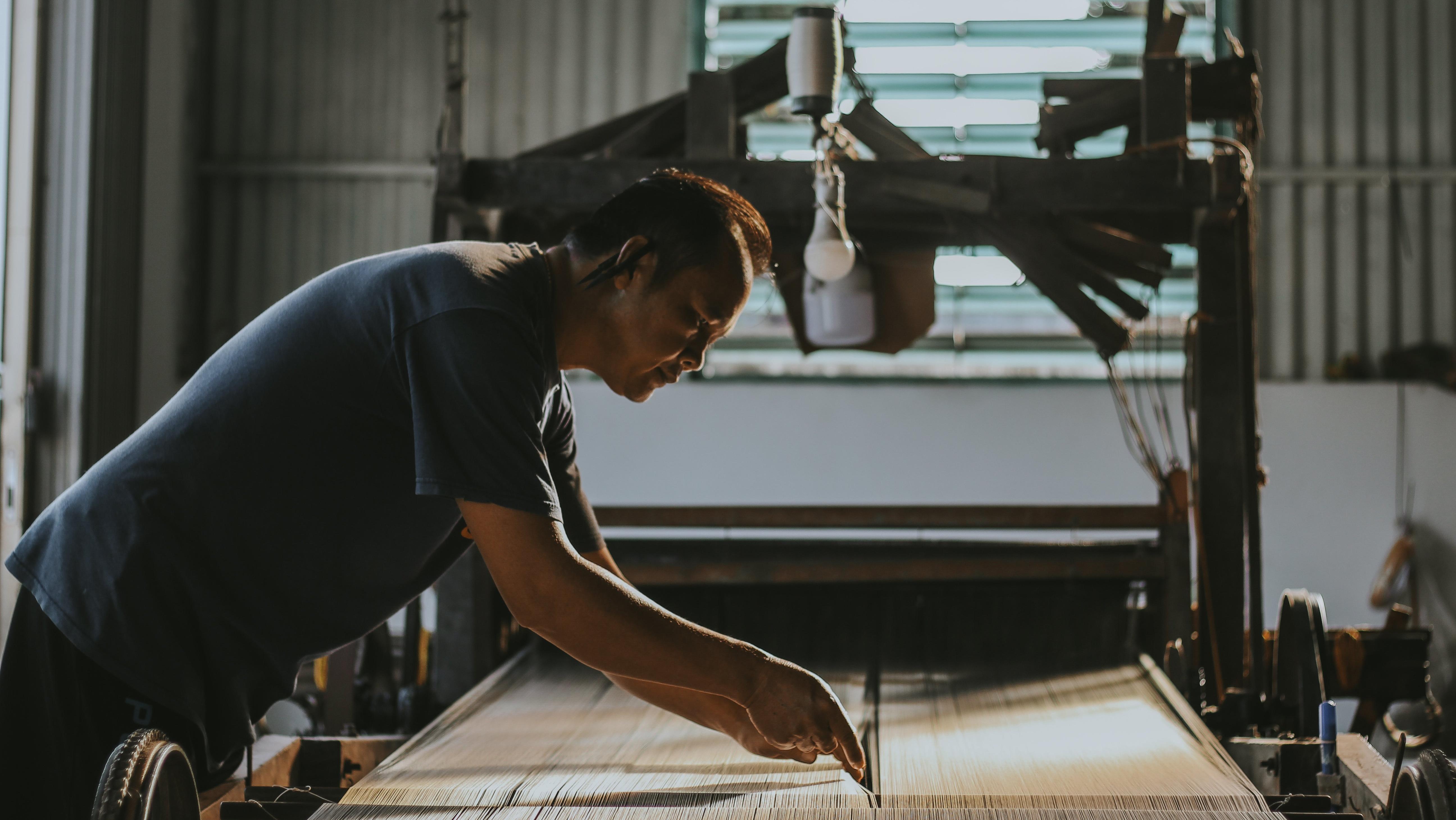"What man is more pure than the mandarin of Cua River?"
No girl is as good as Tan Chau girl
Days of weaving silk and growing mulberry trees
"Worshiping father, raising mother is not difficult"
In the entire alluvial land of the Mekong Delta, An Giang is perhaps the only place with the profession of growing mulberry, raising silkworms and weaving silk. When the flood waters recede, a strip of sandy land along the Tien and Hau rivers, stretching from Tan Chau to Cho Moi and then across the Cambodian border, is covered with green mulberry fields.
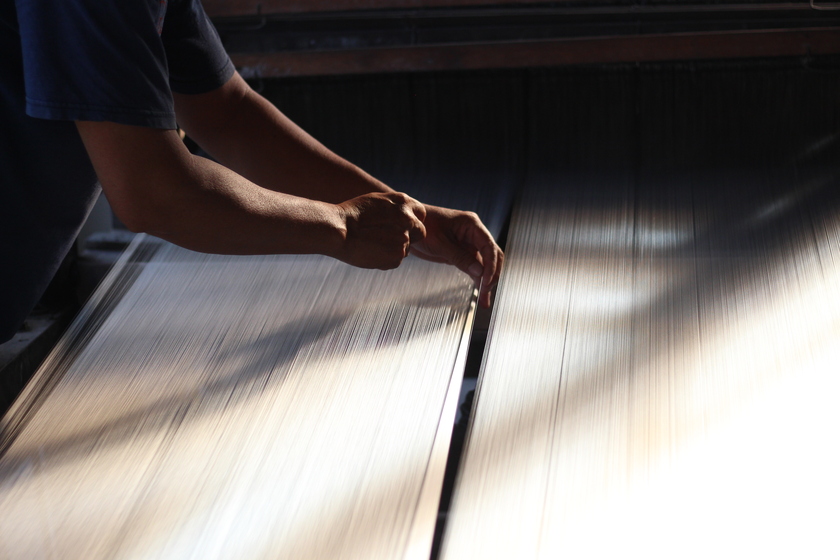
In the entire alluvial land of the Mekong Delta, An Giang is perhaps the only place with the profession of growing mulberry, raising silkworms and weaving silk.
No one knows when the profession of growing mulberry, raising silkworms, and weaving silk began in Tan Chau. And it is very possible that the residents of the Central region more than 400 years ago went to the South to reclaim land and settle down, bringing with them the traditions of their homeland and the profession of growing mulberry, raising silkworms, and weaving silk on the banks of the Mekong Delta.
Back in the day, any household with a small handloom had at least two pairs of workers, while a large weaving factory needed 6-7 pairs of workers, each pair weaving 800-1,000 meters per month. After the golden age, in the 70s, silk factories weaving with nylon thread gradually replaced traditional silk. Lanh My A was facing the risk of disappearing, the silk weaving looms of Tan Chau silk region were gradually destroyed. Today, the "Tan Chau silk land" with its long history has less than 20 households left, including the Tam Lang facility.
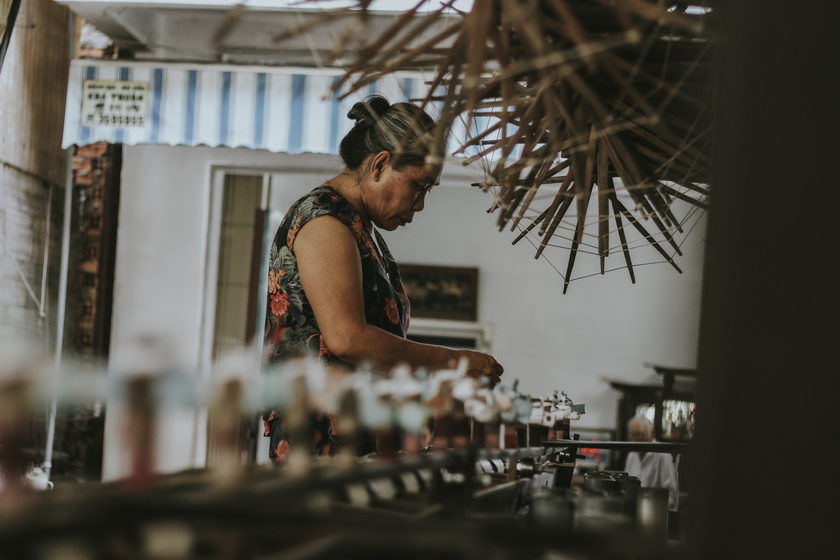
It was the ingenuity of Tan Chau weavers that created the "premium" silk called My A silk - the silk queen.

Tan Chau silk is considered the pride of people from An Giang land.
As a true son of the West, Nguyen Thanh Nhat (4th year student of An Giang University) had the opportunity to visit and experience the famous silk weaving profession: “The name Tan Chau silk or My A silk is not too strange to An Giang people. This is a premium silk with a characteristic jet black, shiny color, when worn it creates a cool feeling. Therefore, this type of silk is not only famous in Tan Chau but also in An Giang and neighboring areas”.
Coming to Tam Lang facility, Thanh Nhat had the opportunity to witness with his own eyes the process of skilled craftsmen making silk, from weaving on machines to dyeing and ironing to create the finished product. One of the interesting experiences that impressed Thanh Nhat was picking the mac nua fruit himself, the main ingredient that creates the jet black color for silk. In addition, the craftsmen also shared about the stages as well as the difficulties in creating silk and maintaining the craft village.

Tan Chau silk is a pure Vietnamese product with strong national character.
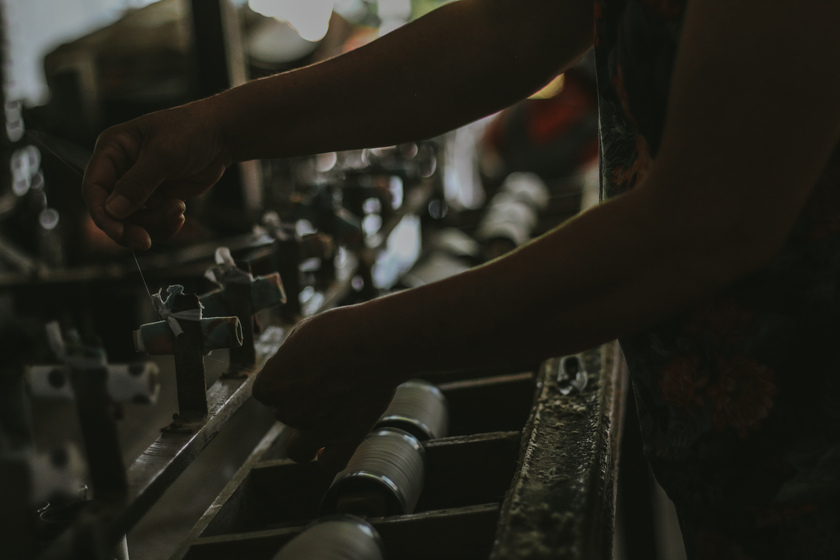
It is known that My A silk is a smooth, elegant black silk. The special thing about this product is that it does not stretch and does not absorb moisture, so it is very cool to wear in the summer and surprisingly warm in the winter.
To get the shiny black My A silk fabric, creating a cool and smooth feeling, the skilled craftsman must spend a lot of time and effort with many different stages. The time when the silkworms are feeding is the most difficult stage of the silkworm farming. The workers almost always have to be on duty next to the tray and the mulberry cutting board. They sleep for one or two hours at night and then wake up to spread leaves to feed the silkworms. When the silkworms are ripe, they are put on the "spindle" to spin silk, the weaving village at this time becomes more sparkling than ever.
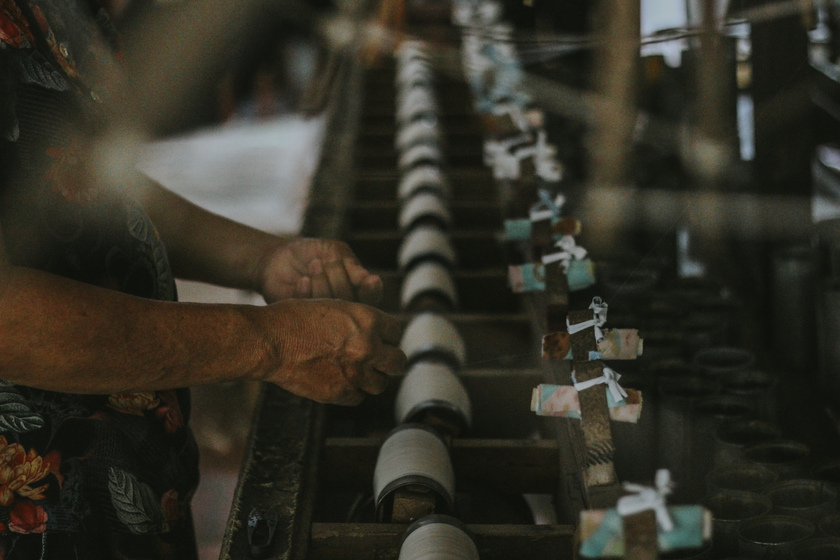
Workers work continuously with weaving machines.

Next comes the silk reeling stage. Hundreds of charcoal stoves are burning brightly to boil water, then the cocoons are put into the copper pot. The reeler holds a chopstick in one hand and stirs continuously while turning the silk reeling wheel with the other hand until only the silkworm remains remain in the pot.
One of the highlights of Tan Chau silk village is the use of mac nua fruit to dye silk, although it is a natural dye, it is very durable and beautiful. Mac nua tree is a type of tree with black wood, thin leaves, and round fruit clusters similar to longan. Mac nua fruit, after being harvested, is classified into different sizes. Normally, people will choose large and green fruits, removing ripe fruits because there is no sap left. Mac nua fruit is crushed and mixed with water to create a thick yellow solution, when exposed to air and temperature, it will turn black.
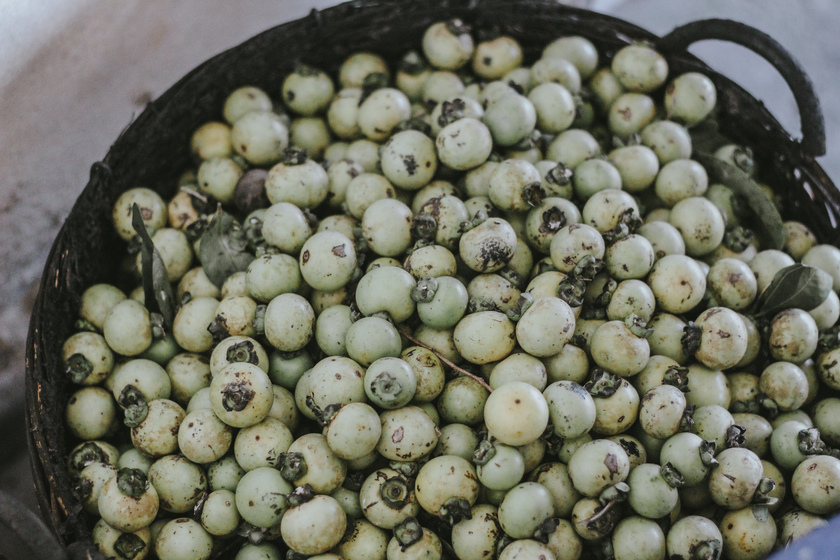
One of the highlights of Tan Chau silk village is the use of mac nua fruit to dye silk.
The silk dyeing process is considered important and elaborate because the silk is not only dipped once but even hundreds of times so that each silk thread is deeply and evenly soaked, then brought out to dry. When drying, you must make sure the weather is sunny enough to dry for 4 days. The dyeing and drying time takes about 40-45 days. The result is shimmering silk with a special mysterious black color, soft, durable and highly hygroscopic.
Talking to Travellive, Thanh Nhat shared: “What impressed me was that when I first arrived, I heard the sound of the weaving machine, which was quite loud, and the image of the workers working continuously and getting used to the sound of the weaving machine. This was also the first time I saw and touched the fabric. In my opinion, the fabric is unlike any other fabric, it is shiny and jet black.”

The silk dyeing process is considered important and elaborate.
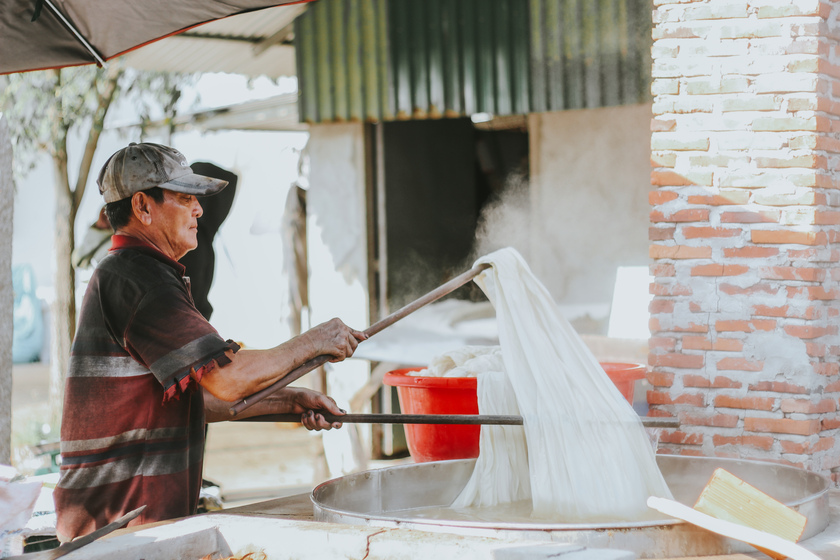
Tan Chau silk is a pure Vietnamese product imbued with national character. Clothes made from Tan Chau silk bring the wearer a comfortable, cool feeling in the summer and warm in the winter. Therefore, it is worthy to be called the “queen” of silks.
